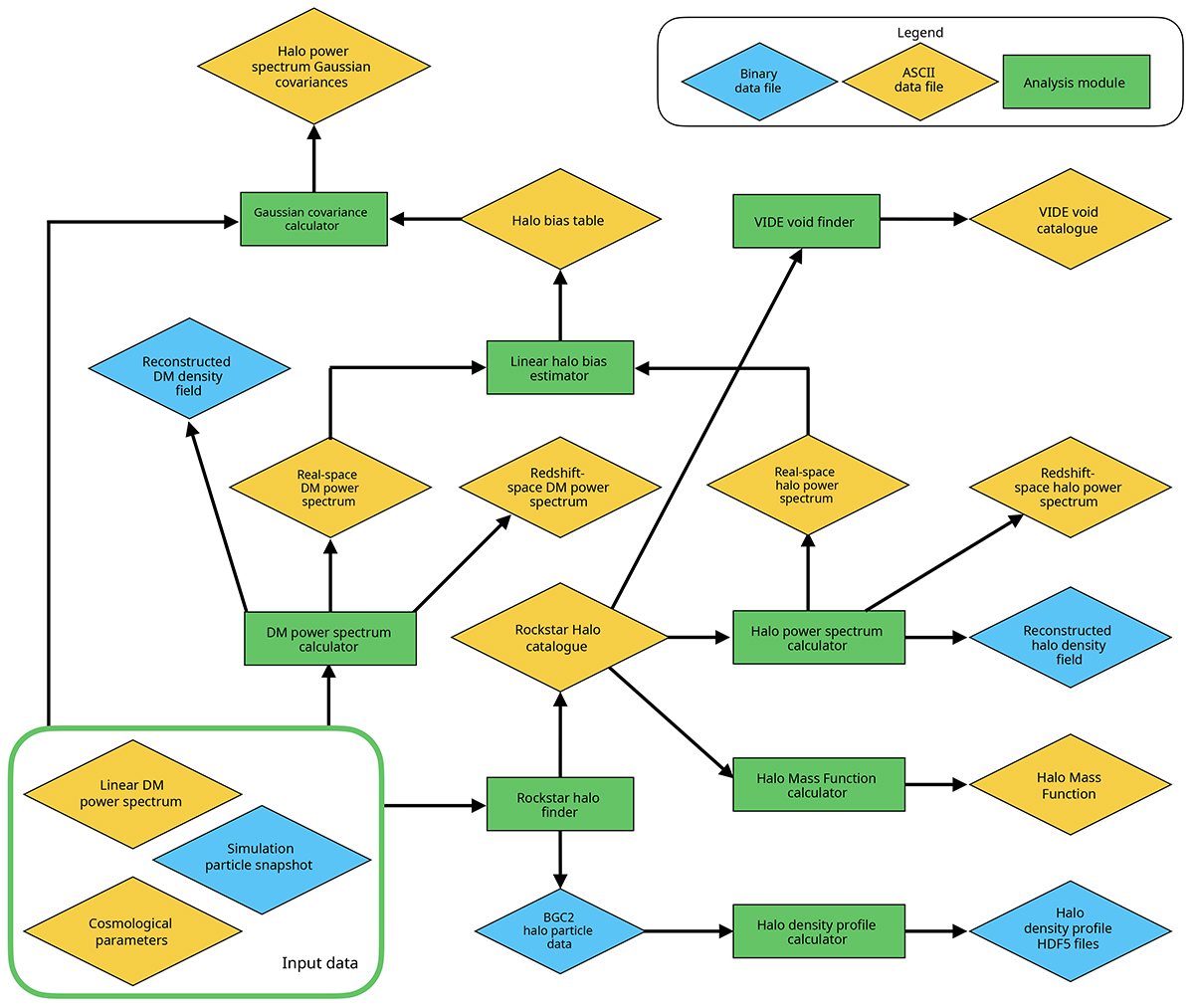Fig. 1.

Download original image
Flowchart summarising the main steps of the analysis pipeline. In the first step, the pipeline executes the Rockstar halo finder to generate the halo catalogues and additional BGC2 particle data containing all relevant information for the halo profile calculation. Then, the 2D and 3D halo profiles, the halo mass function, and void catalogues are calculated by the corresponding modules. The real- and redshift-space halo power spectra and the triangular shaped cloud (TSC) reconstructed halo density fields on a regular cubic grid are computed for a predefined mass bin. After this, the dark matter power spectrum calculator module computes the real- and redshift-space dark matter power spectra with the reconstructed TSC dark matter density field. By using the real-space dark matter and halo power spectra, the linear-halo-bias estimator module calculates the halo-bias table using only the linear scales. Finally, by using this halo-bias table, the linear matter power spectrum, and the cosmological parameters, the halo redshift-space power spectrum Gaussian covariances are computed. This process is repeated for all selected particle snapshots.
Current usage metrics show cumulative count of Article Views (full-text article views including HTML views, PDF and ePub downloads, according to the available data) and Abstracts Views on Vision4Press platform.
Data correspond to usage on the plateform after 2015. The current usage metrics is available 48-96 hours after online publication and is updated daily on week days.
Initial download of the metrics may take a while.


